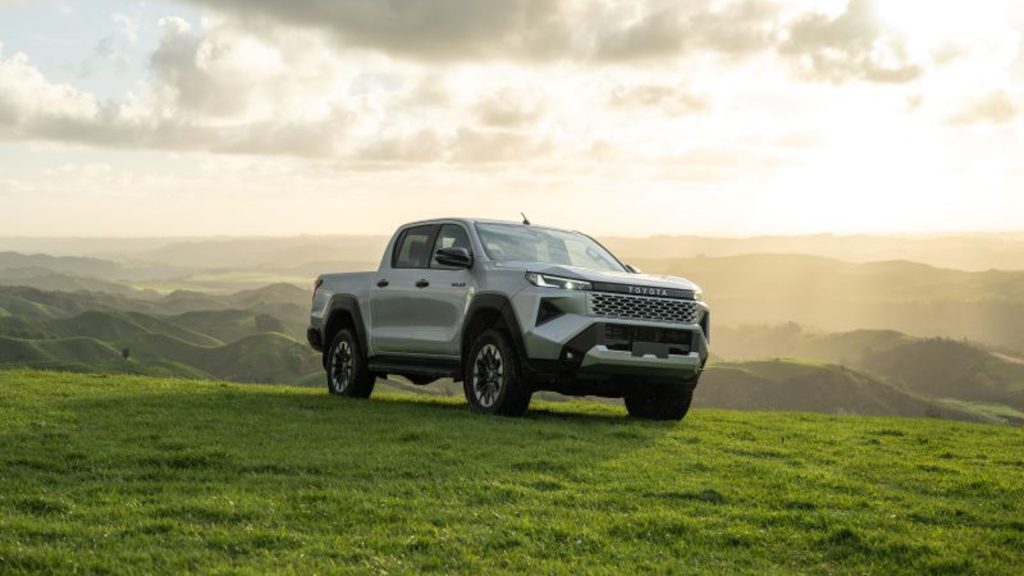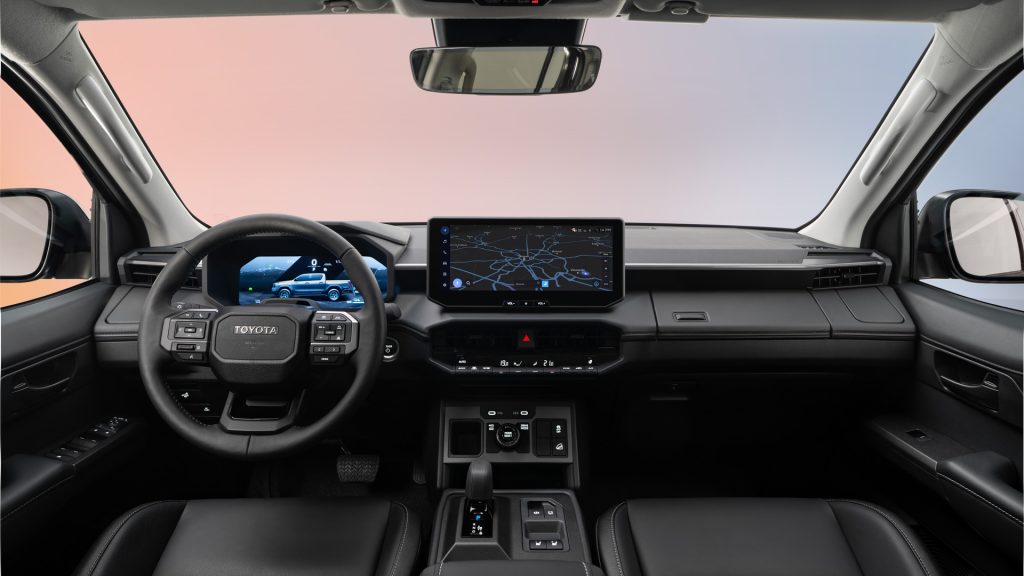Next-generation Toyota HiLux confirmed for NZ, electric and hydrogen models inbound
Words NZ Autocar | Images Supplied
Toyota has unveiled the ninth-generation HiLux ute, revealing powertrains ranging from diesel to electric and hydrogen.
Set to arrive in Kiwi showrooms from 2026 (the HiLux’s 50th birthday in NZ), the initial line-up will consist of SR, SR5 Limited, and the new Adventure trim levels.

Toyota New Zealand notes the strong local interest in the wide-track SR Cruiser and GR SPORT grades, and is “exploring opportunities to make them available in the future.”
On the outside, this new HiLux wears what Toyota calls a ‘Cyber Sumo’ design theme. This redesign was reportedly led by Toyota Australia’s design team at the Product Centre in Altona,
Melbourne.
This theme includes the new slimmed down headlights, and sharp grille that’s flanked by large air intakes. At the rear, the ute gets a pressed Toyota logo, and a step which extends out from the tailgate.
On the inside, a 12.3-inch infotainment display takes centre stage across all grades, and is paired with a 7.0-inch cluster in the SR, and a 12.3-inch cluster in the SR5 Cruiser and Adventure models.
Wireless Apple Carplay and Android Auto are also offered as standard.

As for power and drivetrain options, this new HiLux will be offered in a total of 12 diesel and hybrid combinations. This includes Two Wheel Drive, Four Wheel Drive, single cab, extra cab, and double cab with both the cab chassis and well-side
Beneath the bonnet, the familiar 2.8-litre turbo diesel four-cylinder engine remains, making 150kW and 420 to 500Nm of torque depending on the transmission. Speaking of which, the HiLux will be offered with either a six-speed auto or three different manual transmission options.
As for the alternative powertrains, more information on the all-electric variant is set to be revealed “early in the new year,” according to Toyota New Zealand Chief Executive Officer, Tatsuya Ishikawa.
According to international information from Toyota, this will be powered by a 59.2 kWh lithium-ion battery. This gets a payload of 715kg, can tow up to 1600kg, and gets a driving range of around 240km (WLTP) when doing the latter.
As for the hydrogen-powered FCEV model, this is set to join the line-up in 2028.





